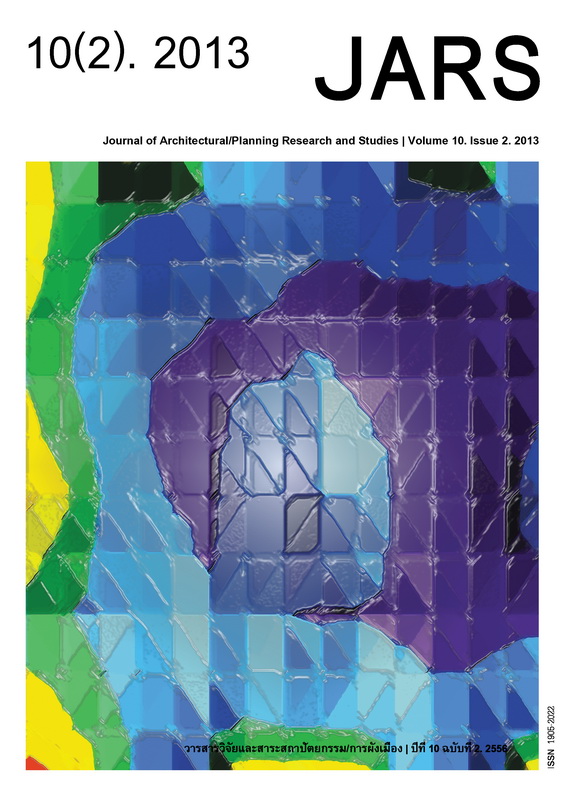Enhance Daylighting Quality of Architecture Studio in Faculty of Architecture, Urban Design and Creative Arts, Mahasarakham University
Main Article Content
Abstract
Downloads
Article Details

This work is licensed under a Creative Commons Attribution-NonCommercial-NoDerivatives 4.0 International License.
All material is licensed under the terms of the Creative Commons Attribution 4.0 International (CC-BY-NC-ND 4.0) License, unless otherwise stated. As such, authors are free to share, copy, and redistribute the material in any medium or format. The authors must give appropriate credit, provide a link to the license, and indicate if changes were made. The authors may do so in any reasonable manner, but not in any way that suggests the licensor endorses you or your use. The authors may not use the material for commercial purposes. If the authors remix, transform, or build upon the material, they may not distribute the modified material, unless permission is obtained from JARS. Final, accepted versions of the paper may be posted on third party repositories, provided appropriate acknowledgement to the original source is clearly noted.
References
Brown. G. Z & DeKay, M. (2000). Sun, wind & light architectural design strategies. New York: John Wiley Sons.
Chirarattananon, S. Chedsiri, S & Renshen, L. (2000). Daylighting through light pipes in the tropics. Solar Energy, 69(4), 331-341.
DIALux Light Building Software. (2012). DIALux 4 with new improved calculation kernel. Retrieved December 12, 2012, from http://www.dial.de/DIAL/fileadmin/download/dialux/wissen/Dx4_Rechenkern_eng.pdf
Illumination Engineering Association of Thailand [TIEA]. (2003) TIEA–GD2003 ข้อแนะนำระดับความส่องสว่างภายในอาคารของประเทศไทย [TIEA-GD003 Thailand Indoor illuminance recommendations]. Bangkok, Thailand: Author.
Intarakulchai, B. (2009). การออกแบบและพัฒนาระบบท่อนำแสงแนวนอนสำหรับอาคารประเภทสำนักงาน [Design and development horizontal light pipe for office building]. Master of Architecture Thesis, Faculty of Architecture, Chulalongkorn University, Bangkok, Thailand.
Intarakulchai, B. (2012). รายงานการวิจัย การปรับปรุงห้องเรียนภาคปฏิบัติของอาคารเรียนภาคปฏิบัติของอาคารเรียนคณะสถาปัตยกรรมศาสตร์ ผังเมือง และนฤมิตศิลป์ มหาวิทยาลัยมหาสารคาม เพื่อเพิ่มปริมาณแสงธรรมชาติให้เหมาะสมสำหรับนำมาใช้งาน [Research Report: Studio improvement in Faculty of Architecture, Urban Design and Creative Arts, Mahasarakham University for increasing appropriately amount of daylight]. Faculty of Architecture Urban Design and Creative Arts, Mahasarakham University, Maha Sarakham. Thailand.
Jindawanik, T. (2003). การประหยัดพลังงานในอาคาร [Energy saving in building]. Engineering Today, 3(1), 3.
Kwok, C. M. & Chung, T. M. (2008). Computer simulation study of a horizontal light pipe integrated with laser cut panels in a dense urban environment. Lighting Research and Technology, 40(4), 287-305.
Oakley, G., Riffat, S. B. & Shao, L. (2000). Daylight performance of lightpipes. Solar Energy, 69(2), 89-98.
Saihong, N. & Srisutapan, A. (2008). แนวทางการออกแบบแสงสว่างในห้องเรียนสื่อผสม [Guidelines for lighting design in multimedia classroom]. Journal of Architectural/Planning Research and Studies, 5(1), 67-81.


